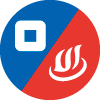Cordova plugins in Angular
Hey you Angular developers. Even though Monaca is still to support Angular development in its Cloud IDE, there are some good news. Just about a month ago Cordova added type definitions (from DefinitelyTyped) to their core plugin repositories. So although that’s not released yet, you can already add those plugins to your Angular app.
This post shows you how to do that by means of a very simple example app. It assumes you’ve been using Monaca either through the command line (CLI) or the Localkit.
CLI
The Monaca CLI allows you to add plugins to your app via the handy monaca plugin add [plugin] command, where plugin is either the name of the plugin (e.g. “org.apache.cordova.camera”), its id (e.g. “cordova-plugin-camera”) or the URL of its GitHub repository (e.g. “https://github.com/apache/cordova-plugin-camera.git”. Since we want to get code that is merged but not released yet, the trick here is to make use of the last option.
So just navigate in your browser to the GitHub repo of the Cordova plugin you want to add and copy the URL. Before you leave notice the recently added types folder, which is what will allow the plugin to work with Angular’s TypeScript.
In order to do so just use the above line monaca plugin add + the link you just copied, on your main directory. This should be all you need. Skip the next section to see an example with Cordova’s globalization plugin.
Localkit
If you are using Monaca’s Localkit the process is a bit trickier and requires the help of the Monaca Cloud. You need first to upload your project there, even if you can’t edit or see your code.
Next go on the browser to the GitHub repository of the plugin you want to add, click “Clone or download” and then “Download ZIP”. Save it in a location of your choice. Before you leave notice the recently added types folder, which is what will allow the plugin to work with Angular’s TypeScript.
Now open your project on the Monaca Cloud. Go on the following link:
Then choose “Import Cordova Plugin”, “Choose File”, select the ZIP file you downloaded previously and press “OK”. You should be able to see the plugin in the “Enabled Plugins” list (might take a refresh) with the latest version and a “-dev” tag. Although you can’t tell, if all went well the plugin files have at this point been added to your project.
The Cloud can be used to directly build or debug your app but you most likely want to put the newly installed plugin to work. Thus go back to the Localkit and download the updated project. You may get a message saying that both versions are not synchronized but choose to continue the download anyway. You should be ready to use the plugin now. Slide on to the next section to see a usage example.
Example App
In this example I will show you a basic usage of the globalization Cordova core plugin.
I started by simply creating a fresh app named local-test with monaca create local-test on the command line and opting by Onsen UI and Angular 2 and the Minimum template (could have done the same in Localkit), which created a single page app with a button that triggers an alert() function. Then I edited that function to use one of the methods of the globalization plugin:
Here I am just getting the preferred language of the device and displaying a message with it but hopefully you can use the plugins for much more complex and useful stuff.
You can find more info on each plugin’s usage and methods on its respective GitHub page. What are you waiting for?
Onsen UI is an open source library used to create the user interface of hybrid apps. You can find more information on our GitHub page. If you like Onsen UI, please don’t forget to give us a star. ★★★★★
